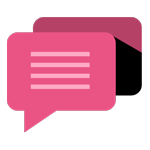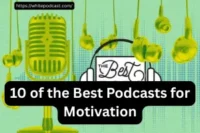how podcast work complete guide pros & cons of podcast
Published: 20 Sep 2024
podcasts are digital audio programs that cover a wide range of topics, from education to entertainment. Creators record and edit episodes, then upload them to hosting platforms that distribute them to directories like Spotify and Apple Podcasts.
Listeners can stream or download episodes anytime, making podcasts a convenient source of information and entertainment. They are often monetized through ads, sponsorships, or listener support.
1. Conceptualising Your Podcast
Before recording, you need a clear concept. Think through:
Niche and Target Audience: Decide on a specific topic or theme and define the audience you want to reach. This could be anything from business, health, entertainment, or niche hobbies.
Format: Choose your podcast format, such as:
Interview-based: Talking to experts or guests.
Solo episodes: You talk directly to the audience.
Panel discussions: Several hosts discussing a topic.
Storytelling or narrative: Telling a story over multiple episodes.
Episode Length and Frequency: Consider how often you will release episodes (weekly, biweekly, etc.) and the length (usually 20-60 minutes is ideal).
.How to Stay Motivated podcast: Tips for Lasting Inspiration
.7 Types of Interview Podcasts: A Comprehensive Guide
2. Planning Content podcast
- Topic Ideas: Plan the first few episodes, outlining topics, guest interviews, or key points to cover.
- Show Structure: Decide on a consistent structure for each episode. This might include:
- Introduction podcast work
- Main content or interview
- Call-to-action (C T A) to leave reviews or follow on social media
- Outro or closing remarks
- Script: You don’t need a word-for-word script, but an outline helps ensure you stay on track. For interviews, prepare questions ahead of time
/how-to-start-a-podcast-best-tips-and-solutions/
3. Equipment You’ll Need

Good audio quality is crucial for podcasts. Here’s the basic equipment needed:
Pop Filter: Helps reduce harsh “P” and “S” sounds when speaking into the mic.
Microphone: A quality USB or XLR microphone (like the Audio-Technica ATR2100 or Blue Yeti) ensures clear sound.
Headphones: Use closed-back headphones to hear yourself and avoid feedback during recording.
Audio Interface: If using an XLR microphone, you’ll need an audio interface (e.g., Focus rite Scarlet) to connect it to your computer.
Recording Software:
Free software: Audacity, GarageBand (Mac), or Zoom (for remote interviews).
Paid software: Adobe Audition, Hindenburg, or Riverside for
4. Recording Your Podcast
Recording Environment: Find a quiet, soundproofed space (avoid echo). Use soft materials like blankets or foam panels to reduce background noise.
Test Recording: Do a short test recording to check for audio clarity and mic levels before starting.
Remote Recording: For remote interviews, use platforms like Zoom, Squad Cast, or Zencastr, which record separate audio tracks for clearer sound quality.
5. Editing Your Podcast
After recording, you’ll need to clean up the audio:
- Basic Editing: Use your recording software (Audacity, Adobe Audition, etc.) to:
- Remove long pauses, filler words (“um,” “like”), and background noise.
- Balance sound levels and adjust volume for good podcast
- Add intro/outro music or sound effects.
- Music & Sound Effects: Use royalty-free music (from sources like Epidemic Sound, Ben sound, or Free Music Archive) for intros, outros, or transitions.
6. Hosting and Publishing Your Podcast
Once the audio is edited, you’ll need to upload it to a podcast hosting platform:
Podcast Hosting Platforms:
These platforms store your audio files and describe your podcast to directories (like Apple Podcasts, Spotify, Google Podcasts):
Popular hosts include Buzzsprout, Anchor, Pod bean, Libsyn, and Transistor.
RSS Feed:
Your podcast host will create an RSS feed for your show. This feed is submitted to podcast directories, allowing people to subscribe to your show and get automatic updates when you publish new episodes.
Submitting to Directories:
Submit your RSS feed to podcast directories such as:
Apple Podcasts:
The largest directory; essential for reach.
Spotify:
Another major platform for podcast distribution.
Google Podcasts:
Free and widely used for Android users.
Other Platforms:
Stitches, iHeartRadio, Overcast, Tune In.
7. Promoting Your Podcast
Promotion is essential for growing your podcast audience:
Social Media: Share episodes on platforms like Twitter, Instagram, LinkedIn, or Facebook. Use engaging visuals and audio snippets.
Podcast Website: Create a website or landing page for your podcast to provide show notes, links, and additional resources. This also helps with SEO.
Collaborate: Appear as a guest on other podcasts or invite guest speakers to your show. Cross-promotion can significantly increase visibility.
Newsletter: If you have an email list, notify subscribers whenever a new episode drops. Newsletters provide a direct connection to your audience.
Ask for Reviews: Encourage listeners to leave reviews and ratings on Apple Podcasts, as these can help improve your visibility.
8. Monetising Your Podcast
Once your podcast grows, you may want to explore monetisation options:
Sponsorship’s: Partner with companies that align with your podcast’s content and audience to promote their products or services.
Affiliate Marketing: Promote products or services through affiliate links and earn commissions for sales made through those links.
Merchandising: Sell branded merchandise like T-shirts, mugs, or other items to your audience.
Crowdfunding: Platforms like Patreon allow your listeners to support your podcast financially in exchange for exclusive content or perks.
Key Tips for Success
- Consistency: Regular episodes keep your audience engaged and coming back for more.
- Authenticity: Be yourself. Audiences are drawn to genuine, relatable hosts.
- Engage: Encourage listener feedback and interaction to build a community around your show.
- Adapt: Keep learning and refining your process, from production to promotion.
By following this guide, you’ll have the tools and knowledge to create, publish, and grow a successful podcast!
Promote your podcast on social media, collaborate with other pod casters, optimize your titles and descriptions, and encourage reviews and shares.
An RSS feed is a link that distributes your podcast to directories like Apple Podcasts. It contains details about your podcast episodes and allows updates to be automatically sent to subscribers.
Proudly powered by WordPress

- Be Respectful
- Stay Relevant
- Stay Positive
- True Feedback
- Encourage Discussion
- Avoid Spamming
- No Fake News
- Don't Copy-Paste
- No Personal Attacks

- Be Respectful
- Stay Relevant
- Stay Positive
- True Feedback
- Encourage Discussion
- Avoid Spamming
- No Fake News
- Don't Copy-Paste
- No Personal Attacks






